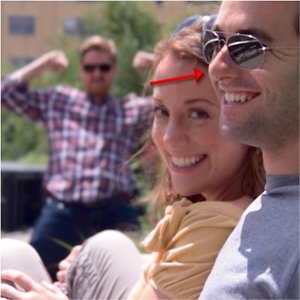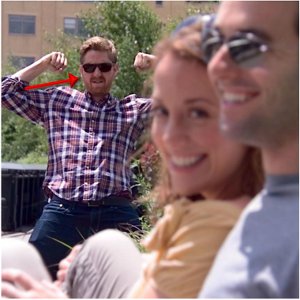The "Deep Data Field System" in Metabolic Phenotyping
Data from a metabolic phenotyping system can be rigidly determined by the parameters entered at the time of the experiment (as with legacy systems), or the data can be a rich mine of information, with complete post-hoc analytical flexibility (as with Promethion). The latter approach allows extraction of experimental data, the need for which was not anticipated at the time of the study. This can save serious amounts of time and money - apart from producing better science.
Browsing through a data set produced by a Promethion metabolic phenotyping system is a fascinating experience. This is for many reasons, but one of the most interesting to me personally is the richness of detail. Because the data from all of the sensors in all of the cages are recorded once a second (together with either multiplexed or continuous metabolic data, depending on the system used), every detail of the experimental animal's interactions with them are recorded as well. This is in stark contrast to legacy metabolic phenotyping systems, which record only a pre-digested sub-set of processed data created using black-box algorithms. In such systems, you have to pre-set the analytical constraints that determine the type of data you will obtain - for example, binning metabolic or uptake data by certain time-periods.
The result is that Promethion data are agnostic. I stress the word because the Promethion-equipped investigator has access to the entire set of raw data from which any analyses can be derived. Although a Promethion metabolic or behavioral phenotyping system gives you helpful intermediate feedback on processed variables such as EE and RQ, the raw data are intact and can be analyzed, and re-analyzed, in any way you choose. The Promethion system, unlike legacy systems, makes no assumptions or presumptions about the questions you are asking or the way in which you are trying to answer them with your experiment. An analysis script extracts the data you need, and analysis scripts are very versatile. The standard output of a legacy metabolic phenotyping system represents only a tiny sub-set of the data available from a Promethion system (of course you can use as little or as much as you want).
Of course, it isn't easy to record high-resolution data from hundreds of sensors every second. That's one reason why the legacy systems can't do it. The other reason is more basic - if everyone is happy with legacy systems, why bother to change? I won't dignify that reason with a reply.
I'll be posting examples of unexpected treasures hidden in Promethion data in due course. But, searching for a metaphor to communicate the ease of extracting novel data from these rich data-sets, I came upon a technology that shares many features with Promethion, though in a different technological world, and the parallels are so interesting I decided to share them with you.
That other technology is the light field camera, pioneered by Lytro. It captures all of the data in the light field at which it's pointed, just as the Promethion system does with behavioral and metabolic data. So far, it sounds like a conventional camera, just as Promethion sounds superficially like a typical metabolic or behavioral phenotyping system. But in fact there is a radical difference. Let's explore the metaphor by treating images from a Lytro camera* as if they were extracted from a data set in the course of a scientific investigation.
So, let's start. You have a single image from a light field camera, or, in our metaphor, a single data file from a "data field system", i.e. a Promethion system. You want to answer a specific scientific question, symbolized by the fellow's face in the foreground.

All well and good. However, as you proceed with writing your paper, you come upon another paper bearing directly on your topic, and it forces you to change the analytical focus of your study slightly. In our metaphor, the focus shifts to the woman's face. Not a problem for a light field camera or, of course, a data field system. Just change the focus (or the analytical script) post-hoc.

Had you been using a conventional camera, or a legacy metabolic phenotyping system, you would have had to set up the shoot again, or deal with an intolerable loss of detail. But because you are using a light field camera, or a data field system, the day is saved. No need to go to the delay, trouble and expense of re-booking a fortnight at the local metabolic phenotyping facility.
Now for a scenario familiar to everyone who has published. Your paper's been submitted and reviewed, but two reviewers - though favorably inclined in general - are demanding, in light of other work just published, that certain additional measurements and analyses must be made. These will normally require you to repeat the entire experiment! Or, to use our light field camera metaphor, the focus has to change to the fellow in the background. Not a problem with a Lytro light field camera:

...And also not a problem with a Promethion data field system. No re-booking an expensive facility, derailing other projects, or re-submitting the MS to a less-fussy, lower-impact journal. Just use a new analytical script. To give you a concrete example, let's say the referee demands that the food uptake data must be accompanied by a full meal pattern analysis with one-second granularity. With Promethion, that isn't a problem at all. Or a complete analysis of behavioral transition probabilities between midnight and 3 a.m. before and after treatment? Null problemo. Or time budgets? A no-brainer. I could go on, but you get the point.
Any questions or comments? Join the site membership (totally spam-free; see the bar to your left) if you have a valid email address **, and post them here. Or contact me directly if you wish.
* The images shown above are derivative works based on public content from the Lytro site in accordance with their published policies.
** By which I mean commercial, academic, or identifiably yours. This restriction is imposed by hordes of would-be posters with names like hgetrew (email address gfhgfjr5566@gmail.com) who are simply forum spammers, and whose applications are heartlessly deleted.
- Log in to post comments